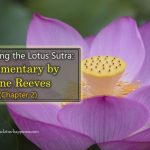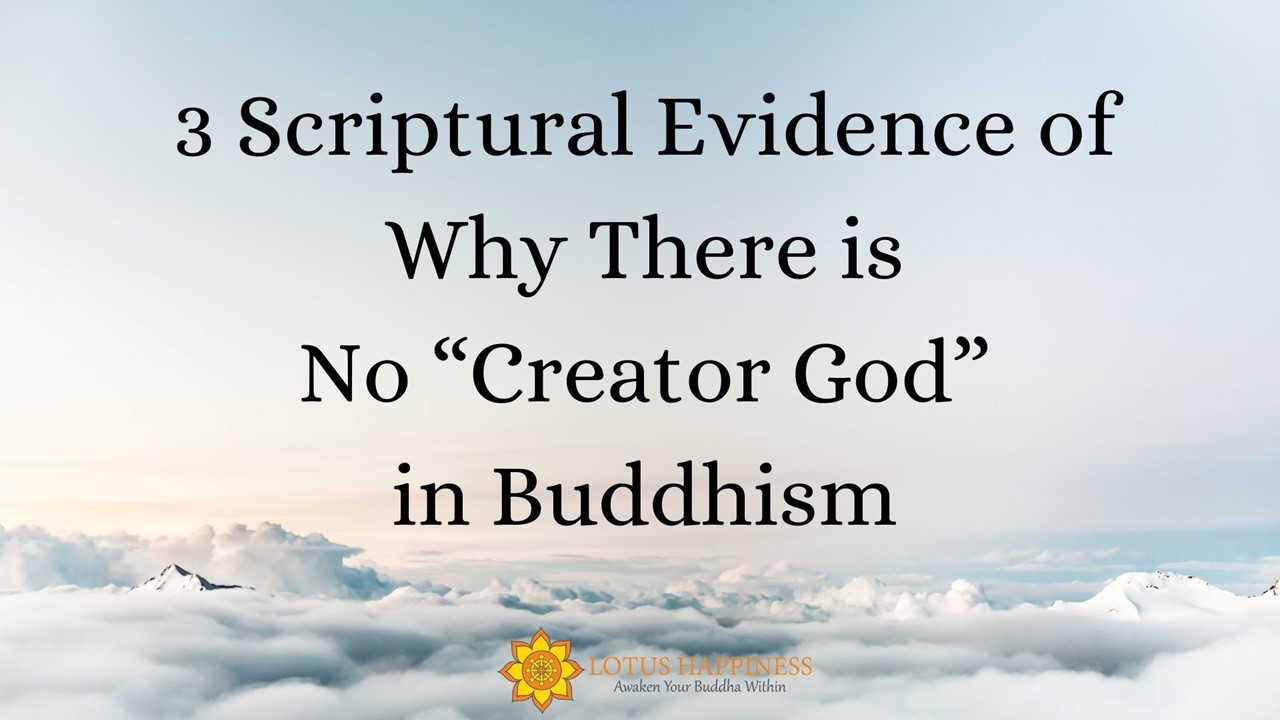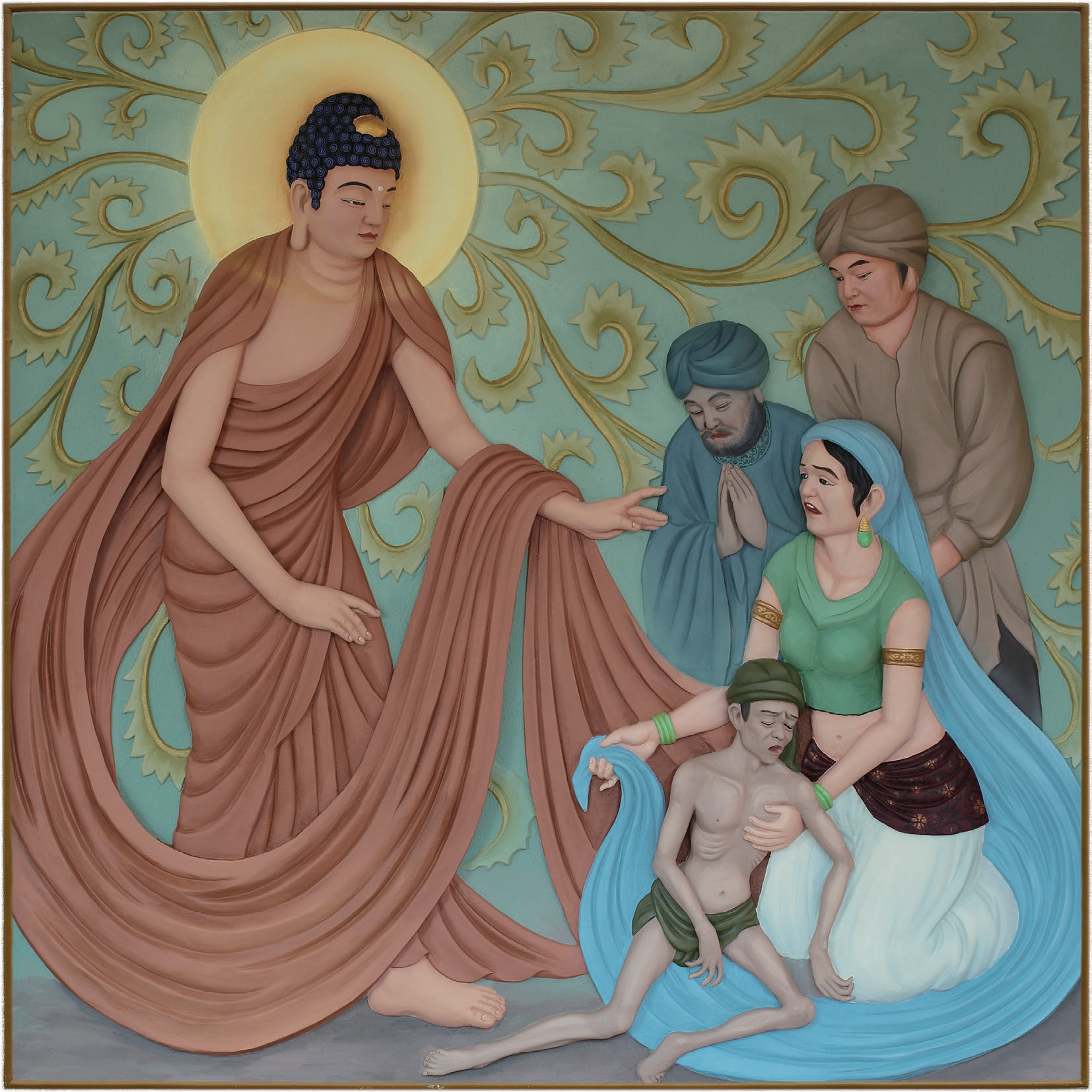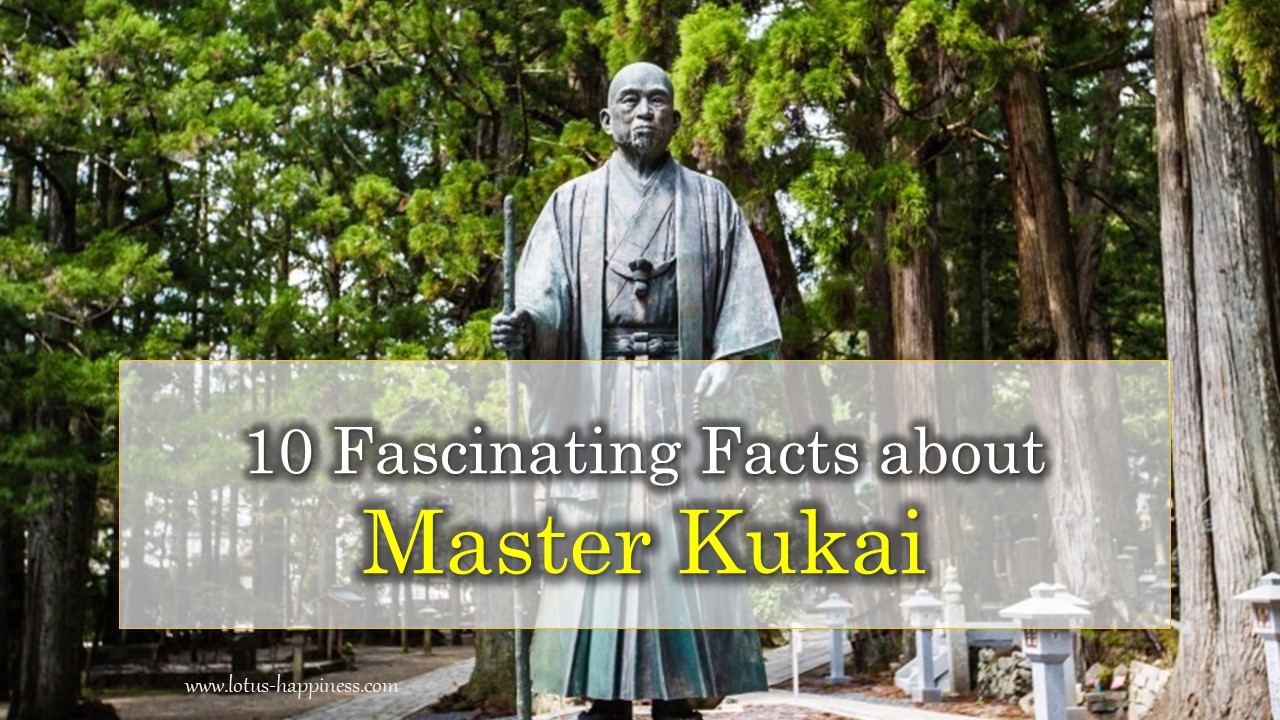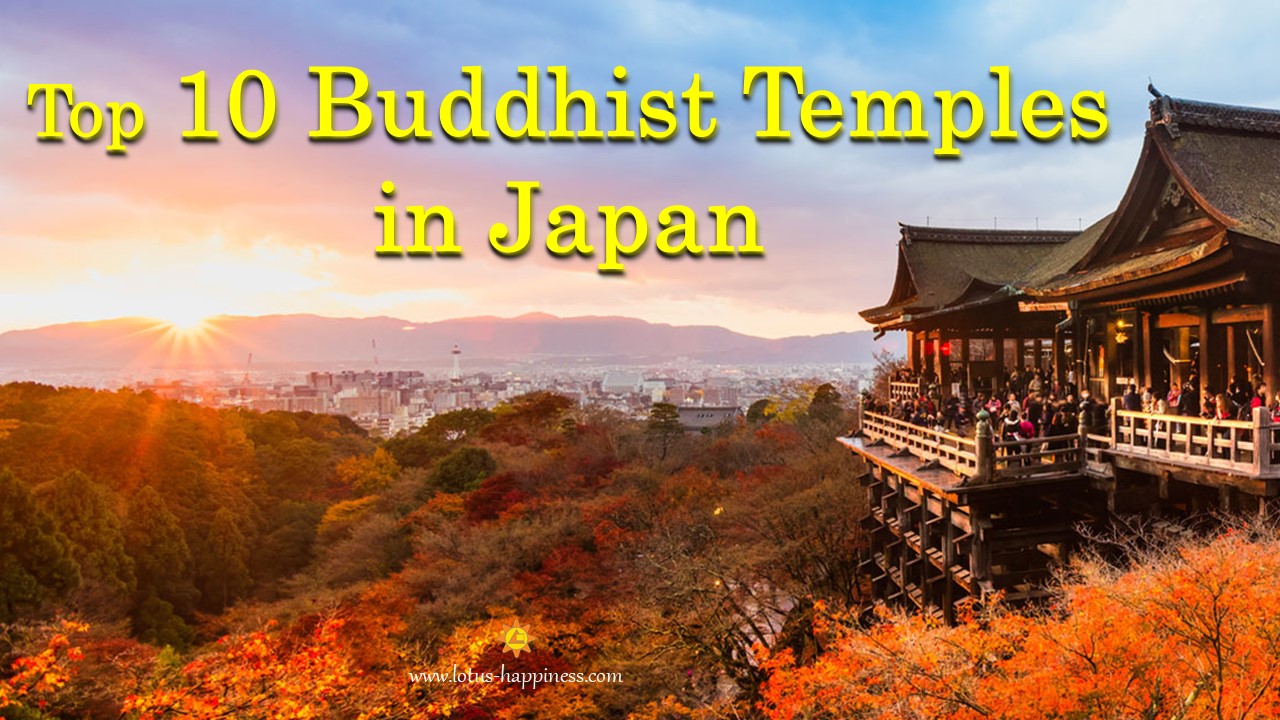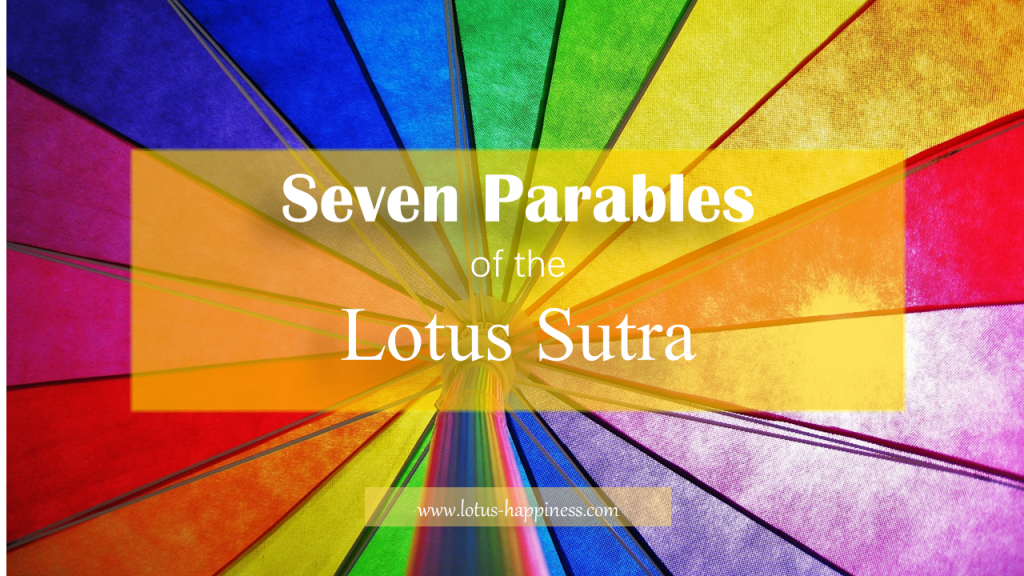
Seven Parables of the Lotus Sutra
In the Lotus Sutra, the Buddha uses similes and parables to explain and unravel the Law of Supreme Perfect Enlightenment in a simplified manner, making them accessible and easy to understand for his disciples.
Among all the sutras, only the Lotus Sutra is distinctive and renowned for its Seven Parables. The seven parables are akin to seven chakras in our bodies, seven days in a week, or even seven rainbow colors.
The Law of Supreme Perfect Enlightenment is represented by the metaphor of White Lotus, and there is a reason behind it. To understand this Law of Buddhahood, let us use the analogy of the refraction or dispersion of white light through a prism.

The white light is the Law of White Lotus, the Law of Supreme Perfect Enlightenment; the prism is the Threefold World, the seven colors are the seven parables. As you can see, it becomes clear that the seven parables are actually the basic constituents of the Law of White Lotus. By having some insights about the seven parables, we will get a glimpse of the nature of the Law of Supreme Perfect Enlightenment.
1.Parable of a Blazing House
(Chapter 3 – The Parable)
A wise and wealthy old man was aware that his dilapidated mansion was ablaze. His children, however, were trapped inside the blazing house. To save his children, he told them to leave the house but his children were too caught up in their toys to heed his father’s advice.
Hence, the father enticed his children by telling them about the three kinds of toys outside the mansion: goat cart, deer cart, and ox cart. Having heard the unusual toys, his children were excited and they scrambled to leave the blazing mansion. After the children managed to escape, their father gave them the most splendid white ox cart.
Insights:
The wise old man is the Buddha while the children are his disciples. The blazing mansion is the Threefold World, the goat cart is the Four Noble Truths (for shravaka or voice-hearer), deer cart is Twelve-linked Chains of Causation (for pratyekabuddha or cause-awakened ones), the ox cart is Six Paramitas (for bodhisattvas). Finally, the white ox cart is the One Buddha-Vehicle, the Law of Supreme Perfect Enlightenment, that is expounded in Chapter 2: Expedient Methods of the Lotus Sutra.
2. Parable of the Father and His Lost Son
(Chapter 4 – Faith and Understanding)
A boy deserted his father to lead the life of a vagabond. He wandered aimlessly from place to place, taking meager odd jobs just to survive. One day, he stumbled upon a great mansion owned by his father. The boy did not recognize his father but his father immediately spotted his son. The father quickly sent his men to capture him. Yet, his son who had an inferior sense of self-worth was incredibly terrified of the dignity and affluence of his father.
His father, knowing the humble outlook of his son, abandoned coercion. Instead, he sent his two undignified-looking men to recruit his son to work as a cleaner in his mansion. His son immediately accepted the job as he perceived the job was a right fit aligned with his skills and abilities.
Occasionally, the father disguised himself by wearing grubby clothes so that he could get near his son and encourage him to work hard. For 20 years, his son toiled diligently, earning the trust of his father. The son was promoted by his father to Chief Steward in charge of the storehouses.
When the death of the father was imminent, the father revealed the truth of the father-and-son relationship between them and bequeathed all his treasures to his son.
Insights:
The father is the Buddha while the son is his disciple. The cleaner job represents the teaching of early Buddhism while the inheritance is the One Buddha-Vehicle, the teaching of Law of Supreme Perfect Enlightenment. This means that the Law of Buddhahood is not something that is naturally endowed; it is something that has to be inherited and passed down from one person to another person.
3. Parable of the Medicinal Herbs
(Chapter 5 – Parable of Medicine Herbs)
The great cloud ascended in the sky, giving out rain and moisture equally to various types of trees and plants on Earth. The various types of plants are the three kinds of medicinal herbs (i.e. superior, mediocre, or inferior) and two kinds of trees (i.e. large or small). All of them, by virtue of their distinctive natures, absorbed moisture differently and grew at varying rates.
Insights:
The great cloud is the Buddha and the various plants are the living beings. The rain is equal representing the fair preaching by the Buddha.
The meaning of three kinds of medicinal herbs are:
- Inferior herb denotes teachings by heavenly and human beings (including those of Brahma‘s),
- Mediocre herb denotes teachings for Shravaka (Four Noble Truths) and Pratyekabuddha (Twelve-Linked Chains of Causations),
- Superior herb denotes the teaching for Bodhisattva (Six Paramitas)
The superior herbs are further categorized into two kinds of trees: large and small. The small tree represents individual practice towards Buddhahood while the large tree represents those who are able to lead innumerable people to Buddhahood.
4. Parable of the Imaginary City
(Chapter 7 – Parable of the Imaginary City)
A wise and experienced caravan leader led a group of travelers in search of a great treasure. The journey was long and hazardous. As time passed, the group became weary and disheartened, wanting to give up half-way and turn back.
To help his group continue the journey, the caravan leader conjured up an imaginary city through his divine powers and told his group to take a temporary respite in the city ahead. After the group was well-rested, the city was made vanished. The caravan leader then revealed to them that the city was nothing more than an illusion for them to take a break and that their true treasure destination is close at hand.
Insights:
The caravan leader is the Buddha while the group is the disciples. The imaginary city is provisional nirvana ( the realm of Arhat) while the true treasure destination is the ultimate nirvana (the One Buddha-Vehicle in the realm of Buddhahood).
Disciples of the Buddha should all have the aspiration for Buddhahood. They should not be resting on their laurels by thinking that having attained the state of Arhatship is sufficient.
5. Parable of the Jewel in the Robe
(Chapter 8 – Prophecy of Buddhahood for the Five Hundred Disciples)
A poor man visited a good friend. He was soon drunk and fell asleep. Before leaving for business trips, his good friend left a priceless jewel by sewing it into the lining of the poor man’s robe.
When the poor man woke up, he resumed his life as a vagrant, completely ignorant of his priceless jewel in his robe. Over the years, he became increasingly destitute.
One day, he bumped into his good friend again. His good friend was surprised to know that his poor man remained impoverish. The good friend then showed him the jewel which had been sewn in the poor man’s robe. When the poor man discovered the jewel in his robe, he was in seventh heaven! With the given jewel, the poor man was liberated from poverty.
Insights:
The good friend is the Buddha while the poor man is the common people. The jewel represents the Law of Supreme Perfect Enlightenment.
Contrary to most people’s understanding, the jewel is NOT the Buddha-nature. The Buddha-nature is akin to a fertile land which is inherent in all living beings, and the Law of Buddhahood is akin to a seed (the jewel) that has to be given and planted in order for Buddhahood to grow and flourish. The analogy is simple: if you plant an apple seed in a fertile land, you reap apples. If you plant the Buddha’s seed within your soul, you become a Buddha. Simply put, you are the Buddha-nature and it is just a matter of choice to receive the seed of Buddhahood in order to attain Supreme Perfect Enlightenment.
6. Parable of the Precious Pearl in the Topknot
(Chapter 14 – Expounding with Peace and Joy)
Once, there was a Holy King of Wheel Turning who rewarded his victorious soldiers by doling out a plethora of lavish gifts such as mansions, clothing, and various treasures of gold and silver.
Nonetheless, he kept the only precious pearl in his topknot to himself. This precious jewel was given away only when an outstanding soldier had proven himself worthy by consistently triumphing against evils. Eventually, the mighty king gave away even his precious pearl in his topknot.
Insights:
The king is the Buddha while the soldiers are his disciples who are battling Three Poisons and Ten Evil Acts. The gifts are the preliminary teachings of Buddhism while the precious pearl in the topknot is the Law of Supreme Perfect Enlightenment. In other words, the Law of Buddhahood is the crown jewel that is closely guarded in the sleeve of the Buddha. It is only given away when the timing and conditions are right.
7. Parable of the Skillful Doctor
(Chapter 16 – Eternal Lifespan of Tathagata)
There was a sagacious and skillful doctor who was also the father of many children. One day, when the father was out of town, his children unwittingly consumed some poisons.
The father arrived home to find his children writhing on the ground in agony. His deranged children implored their father to heal them. The father immediately concocted the most outstanding medicines to save his children.
Some children immediately took the medicines and were instantly cured. However, some children were adamant, refusing to take the medicines. Hence, the father resorted to an alternative method. He left behind the medicines and said: “I am old and my days are numbered. Here is the outstanding medicine. Take it and you shall be cured of all illnesses.” Having said that, he then traveled again to a far-away land and sent back a message: “Your father is dead.”
When the children heard the news, they were devastated. Constant grief on the demise of their father somehow brought their senses back. They decided to take the medicines and were completely healed.
When the father knew his children were in the pink of health, he returned home to them once more.
Insights:
The Buddha is just like the skillful doctor who creates the outstanding medicine, the ultimate elixir of life, for his children. To save those remaining children who are incorrigible and ignorant, he announces his parinirvana. Yet, in truth, the Buddha has never actually entered parinirvana. The Buddha is always with us now preaching the Law of Anuttara Samyak Sambodhi for the peace, happiness, and liberation of all living beings.
Summary:
The Seven Parables in the Lotus Sutra are expositions of the Law of One Buddha-Vehicle. In other words, the Law of Supreme Perfect Enlightenment that is symbolized by the white lotus is comprehensively explained by the Buddha through the Seven Parables.
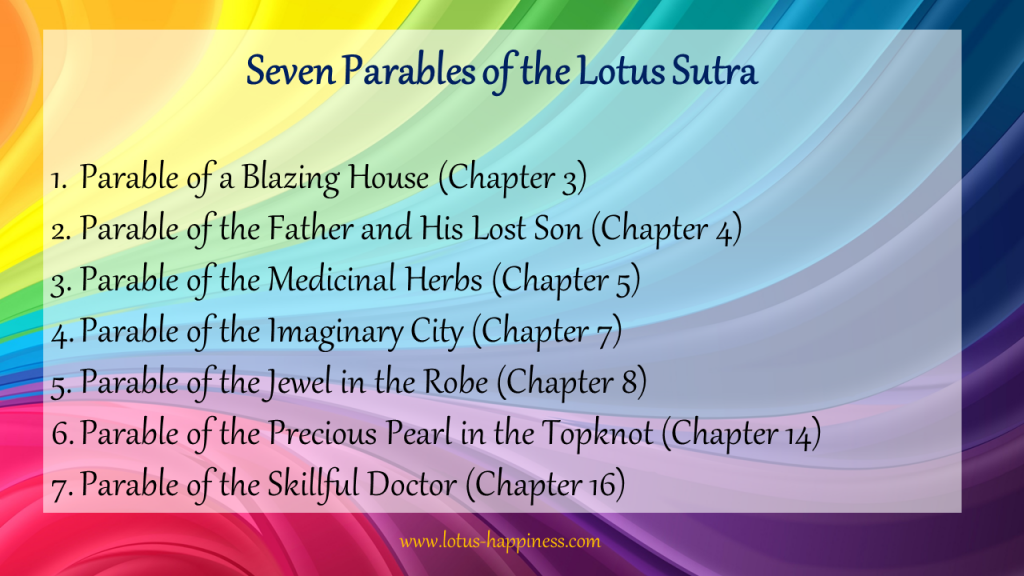
Next Sunday
Let’s Connect
Here are ways to be updated of the latest posts:
Follow us by Liking our Facebook
Subscribe our Newsletter
Support Lotus Happiness
Share with your Friends



